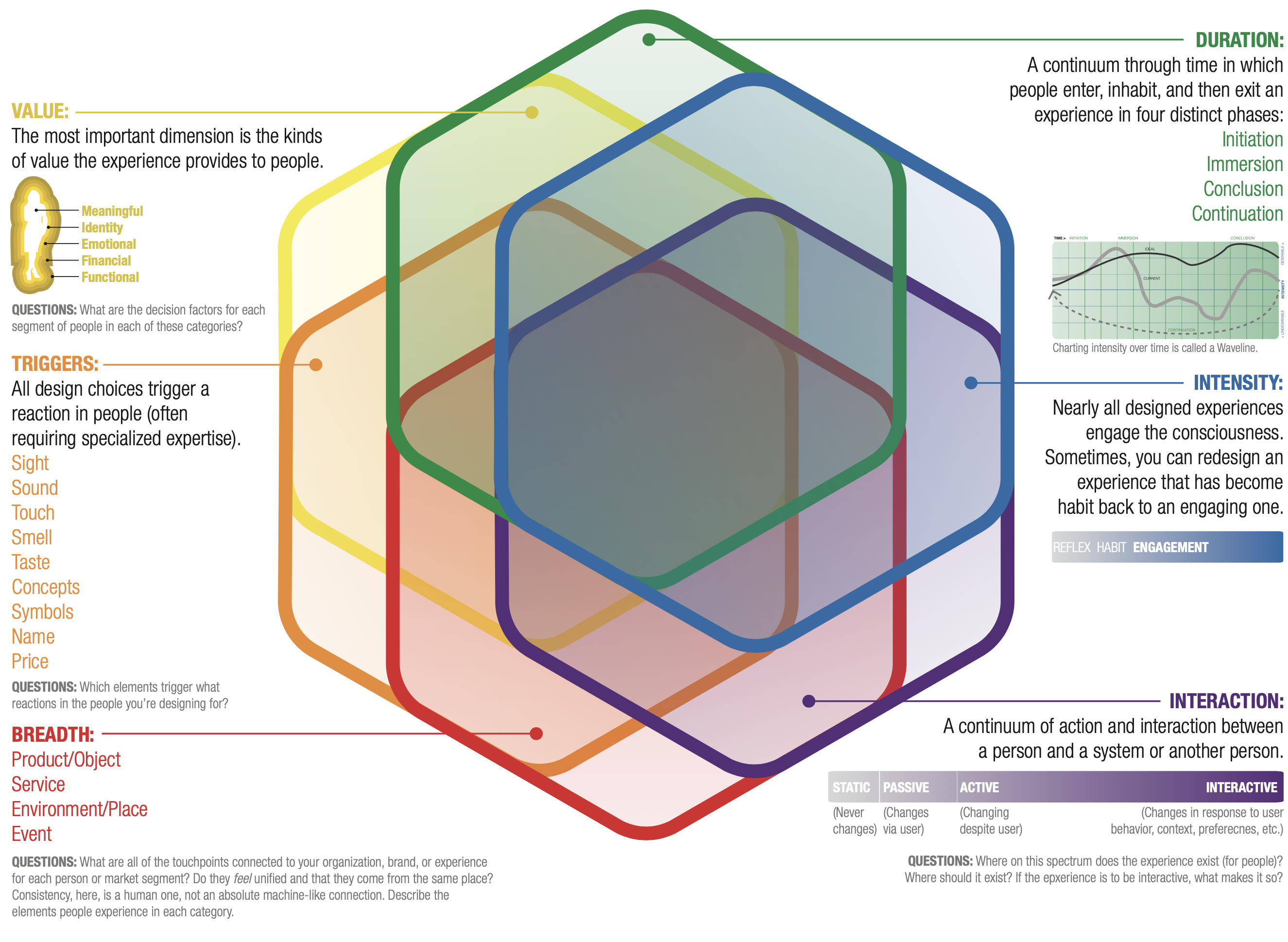A Model of Experience

One of the most important things to understand about creating experiences is that there are several dimensions to them. Unfortunately, most designers of products, services, events, and places ignore some or many of these dimensions (if they know them at all). Too often, the things that get attended to are only the things most easily seen. Yet, most of what creates an experience–and, especially, wonderful ones—are invisible and difficult to see at all. As you can imagine, this limits the quality of the experiences created as well as the opportunities to differentiate them from each other. Worse, without knowing what makes anything a good or better experience, it’s not easy to reliably create anything that is either. Because of this, most people and organizations rely on intuition (or luck), and hire people who have a “feel” for ”these things” but no real process. Rather than rely merely on luck or intuition, professionals prefer tools that allow them to be deliberate and repeatable—and we now have these tools.
All experiences have at least six dimensions:
- Duration
- Breadth
- Intensity
- Interactivity
- Value
- Triggers
I describe these deeply in many of my books and other writings and this model has been published since at least 1999. Not every experience needs to do everything possible in each of these dimensions. Indeed, one of the misunderstandings from the emergence of interactive media was that “interactive” experiences were somehow better than passive ones (and few even understood what made something interactive). Instead, each of these offers an opportunity to explore potential aspects of experiences not yet considered. This is where many organizations find ways to innovate and differentiate their offerings (whether products, services, events, or places).
Once we have a better understanding of what experiences are and can be—a model for experiences—we have a new and better way to approach them strategically and plan for them. This is the essence of experience strategy a plan for evolving and deploying offerings over time to build better experiences. The experiences can be more fun, more evolving, more meaningful, more captivating—whatever we desire and value. But, without know their basics and without a model to address them, we can’t evaluate these plans effectively.
Tools:
Experience Dimensions
Experience Persona Template
Experience Design 1 Cards
Books:
Experience Design 1.1
Making Meaning
Blind Spot
Others…
Workshops:
Designing Meaningful Experiences (slides)